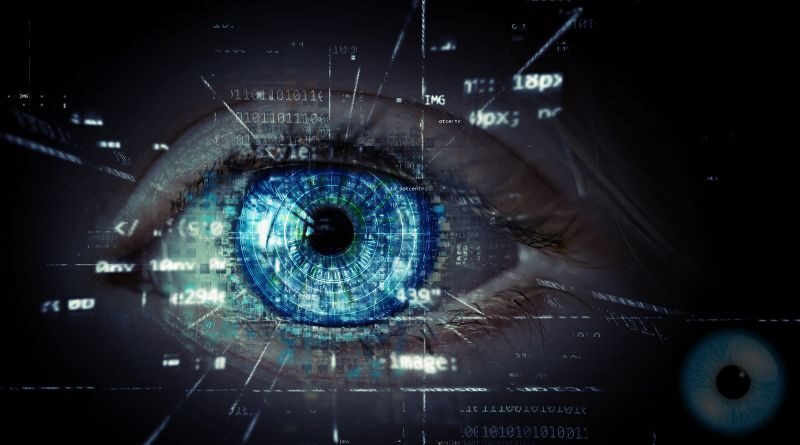Human Eye Working: How Your Eyes helps you see
Did you see anything interesting in Human Eye Working? If you’re reading this, then you most certainly do! And if you’re not reading this, then please don’t blame it on your eyes—the window to your soul and the gatekeeper of what the rest of the world sees in you—because they most definitely work just fine! The eyes are made up of many different parts which work together to perform various functions, but generally speaking, they help us see things like the keyboard you are currently typing on, as well as to read what you are reading right now. Here we will explore how exactly that happens.
Why Our Eyes Need Protection
Our eyes are one of the most important parts of our body. They allow us to see light waves and make sense of them, allowing us to experience the world around us. Our eyes need protection from the environment and from any injury that may happen to them, so you can take a few precautions in order to keep your eye health optimal.
- Wear sunglasses when it is sunny out, as well as anytime it is snowing or cloudy outside. Sunglasses help protect your eyes by filtering out UV rays that damage the cornea and retina.
- It’s also good to wear sunglasses when playing sports because sweat can cause scratches on your eye’s surface. If your glasses ever get dirty, be sure to clean them with an anti-static cloth. Never use soap and water or alcohol wipes on the lenses because they will scratch the surface of the lenses over time.
- Be careful not to rub your eyes too much, as this will lead to dryness and irritation of the eye’s lining membrane (conjunctiva). If you’re getting sick then avoid touching your eyes at all! You should also wash your hands before touching your face. Rubbing irritates this membrane which then causes infection or inflammation around the eye area.
What is Light and Colour Vision of Eyes
The human eye perceives images with light. The human eye has two main structures: the iris and the retina. The eye sends image data to the brain through a bundle of nerves called the optic nerve. The two types of cells that make up the retina are rods and cones. Rods are sensitive to black, white, and shades of gray; cones are sensitive to color and fine detail; humans have three types of cones: red, green, and blue (people see differently based on their type). There is a blind spot at about 3 o’clock in both fields of vision (where there is no receptor for cone cells) which appears as a small dark dot because you can’t see what’s in front of it by turning your head slightly to either side.
Where Does Light Come From?
The lights in the environment hit the objects around you and bounce off of them, which reflects the light back into your eye. The retina at the back of your eye has specialized cells that convert light waves into electric impulses that travel through the optic nerve to a part of your brain called the visual cortex. From there, you process what you see and make sense of it.
Some people who have problems with their retina or optic nerve have problems with their vision because they can’t receive images properly. The types of problems depending on where in the eye these things happen. For example, if someone’s retinas are damaged by disease or injury, then their whole field of vision may be blurry because the person’s eyes cannot focus light on an accurate point for sharp vision.
What do you mean by DRY EYES?
The medical term for dry eye is keratoconjunctivitis sicca. With a deficiency in the natural oils of the eye, tears are not able to lubricate the surface of the eye, resulting in a thick layer of dried tears. Symptoms may include burning or stinging sensations, redness, blurred vision, and sore or irritated eyelids.
The main cause of dry eye is related to aging: 50% percent of people over age 50 have it due to age-related degradation of their lacrimal glands or decreased production and distribution of lipids (fatty substances) on the surface of their eye.
Dry eye symptoms can be caused by a number of factors such as excessive computer or cell phone use, working in smoke-filled rooms, or extreme weather conditions. Medications like antihistamines, antidepressants, and antiseizure drugs can also contribute to dry eye symptoms. In fact, medications are responsible for 25% of all causes of the condition.
If you are experiencing dry eyes and have been on any new medications recently, be sure to ask your doctor if it is causing the problem. Women may experience more severe cases during their menstrual cycle as hormonal changes play a role in the production of natural tear lubricants. The eyes and how they work: Symptoms include stinging or burning sensations, redness, and blurred vision.
Where are the Focusing Muscles Located in Our Eyes?
The Focusing Muscles are located in the Ciliary Body of the eye. These muscles control the shape of the lens and adjust it to focus on near or far objects. The ciliary muscle is circular in nature, contracting to squeeze the lens, forming a convex shape. When relaxed, it releases and flattens out, flattening the lens so that light can enter more easily for near vision.
The lens focuses on the light by flattening or curving the refractive surface. The iris controls the size of the pupil opening, which determines how much light enters the eye. The iris is a muscle and can change size as it contracts and relaxes. This is why our pupils dilate in low light, allowing more light to enter so we can see well.
Eye Structures, Fibers, and Disorders
When a wave of light hits the eye, it sets off a series of events that result in the perception of an image. Light is absorbed and reflected as it passes through three structures in the eye: – The cornea – absorbs most of the light; – The pupil – controls how much light gets into the eye; – The lens – changes shape to help focus on objects at different distances from us. These structures bend or refract incoming light and make up for weaknesses in the human eye.
Retina, Vitreous Humour, and Cornea
The Eye is made up of the Retina, Vitreous Humour, and Cornea. The Retina has photoreceptors that relay information to the brain through the optic nerve, much like a wire carrying electricity. As light passes through the cornea, it enters the eye and is refracted by different parts of the eye into an upside-down image on your retina. The Vitreous Humour fills in behind your retina and helps keep it in place.
The Retina contains two types of photoreceptors, rods, and cones. Cones are used to seeing color, while rods are used to seeing detail in the dark. Rods outnumber cones by a ratio of 20:1 which is why you can’t see much in the dark but can make out colors.
A layer of liquid called the Vitreous Humour fills the space between your eye and your retina, providing nutrients for the retina and helping maintain a stable image on it. The outermost layer of your eye – called the Cornea – is made up of transparent tissue that protects it from getting injured from things like dust or scratches.
The Sclera, Choroid, and Uvea of Our Eyes
The Eyes and how they work is an eye anatomy lesson that answers the question of what is going on behind the scenes? The first thing to note about your eye is that there are three different major parts: the Sclera, Choroid, and Uvea. The Sclera is the tough white outer covering of your eyeball, the Choroid layer surrounds a cavity in which blood vessels lie, and finally, the Uvea area’s location has been described as ‘behind’ or ‘beneath’ to refer to its position.
The focal point of your vision when you look at something is due to how light interacts with these three parts. The Choroid layer, being the thickest and closest to the retina, reflects the most light; it also contains melanin cells that can cause color blindness if diseased. The retina is where photoreceptors detect the rays of incoming light – the photoreceptors convert this information into nerve impulses (as nerve cells) which then travel to your brain through the optic nerve – this happens faster than you can blink! The lens is positioned between them both, helping focus incoming rays from objects outside your body onto the retina.
For more updates regarding Health & Fitness, keep browsing Blogs Gurru.





Top site ,.. amazaing post ! Just keep the work on !